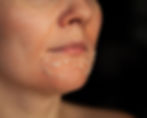How Chemical Peels Can Affect the Longevity of Permanent Makeup
- Karla Sesskin
- Feb 6
- 2 min read
By Karla Sesskin

Permanent makeup (PMU) has revolutionized the beauty industry, providing clients with long-lasting enhancements like perfectly shaped brows, defined eyeliner, and luscious lips. However, for those who love combining beauty treatments, it’s important to understand how certain procedures—like chemical peels—can impact the longevity of PMU.
What Are Chemical Peels?
Chemical peels are skin treatments designed to exfoliate and rejuvenate the skin. They use various acids, such as glycolic, salicylic, and lactic acids, to remove the outer layers of skin and promote new cell turnover. While chemical peels are fantastic for improving skin texture, reducing hyperpigmentation, and fighting signs of aging, they can also pose risks to PMU results.
How Chemical Peels Affect Permanent Makeup
1. Fading and Premature Pigment Breakdown
The acids used in chemical peels accelerate skin exfoliation, which can cause PMU pigments to fade faster than expected. Since PMU is deposited in the upper layers of the dermis, any aggressive exfoliation can disrupt the pigment and lead to uneven or dull-looking results.
2. Changes in Pigment Color
Some chemical peels can alter the chemistry of your skin, causing pigment shifts. For example, certain acids may lighten or even slightly change the color of PMU pigments, leading to unexpected undertones like ashy, orange, or gray hues.
3. Increased Sensitivity and Irritation
After a chemical peel, the skin becomes highly sensitive. If a chemical peel is applied too close to an area with PMU (such as the brows or lips), it may cause irritation, redness, or even scabbing, which could lead to pigment loss.
4. Uneven Healing and Patchy Results
Since chemical peels remove dead skin cells, they can interfere with the healing process of freshly applied PMU. If a client undergoes a peel too soon after a PMU procedure, it may lead to patchy healing, requiring additional touch-ups.
How to Safely Combine Chemical Peels and PMU
If you’re a fan of both chemical peels and PMU, here’s how to enjoy the benefits of both without compromising your results:
Wait Before Getting a Peel – It’s recommended to wait at least 4-6 weeks after a PMU procedure before undergoing any exfoliating treatments, including chemical peels.
Protect Healed PMU Areas – If you’re getting a facial peel, request that your esthetician avoid direct application on tattooed areas.
Opt for Gentler Exfoliation – Instead of deep chemical peels, consider milder exfoliation methods like enzyme peels or hydrating treatments to maintain both skin health and PMU longevity.
Use Sunscreen and Aftercare – Both chemical peels and PMU require diligent sun protection. Always apply SPF to protect your investment in both treatments.
Final Thoughts
Chemical peels and permanent makeup are both incredible treatments, but they require careful planning when combined. If you love both beauty enhancements, be sure to communicate with your esthetician and PMU artist to develop a strategy that preserves your pigment while keeping your skin glowing.
By understanding the relationship between skin treatments and PMU, you can enjoy long-lasting results without unwanted surprises!
As the founder of NY Ink Beauty Arts Academy, I am passionate about educating beauty professionals and helping clients achieve confidence through high-quality PMU treatments.
With Love,
Karla Sesskin